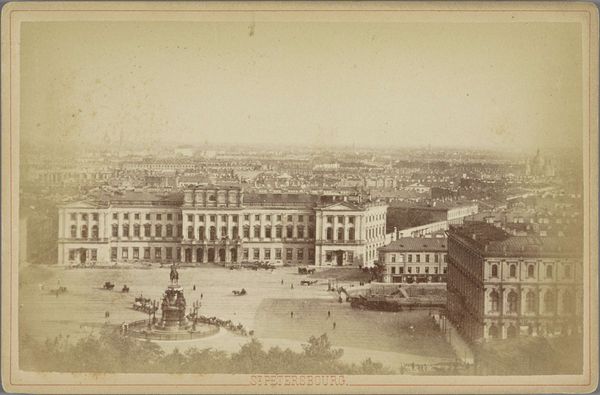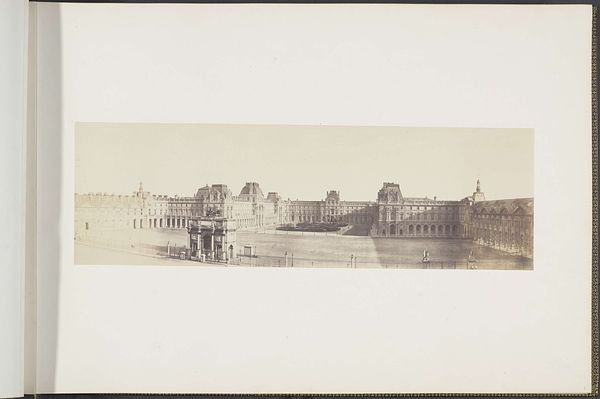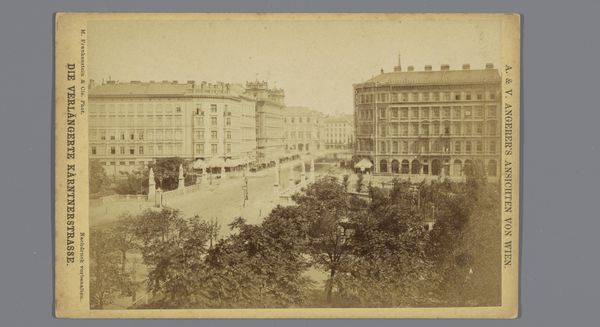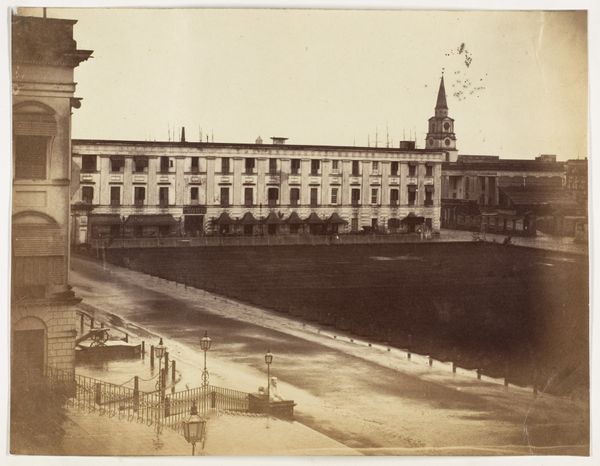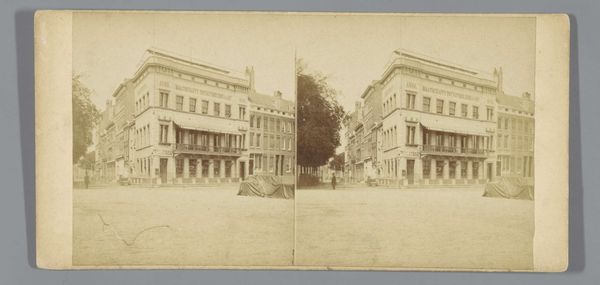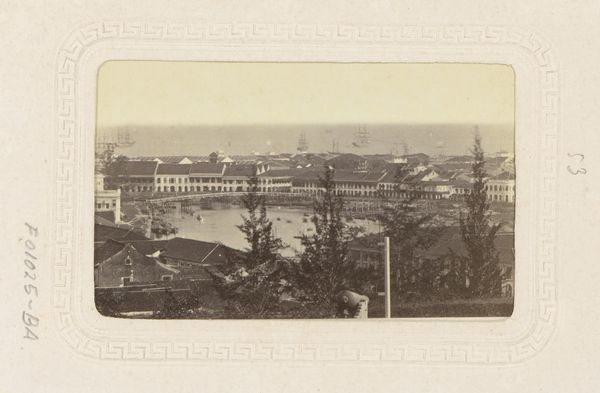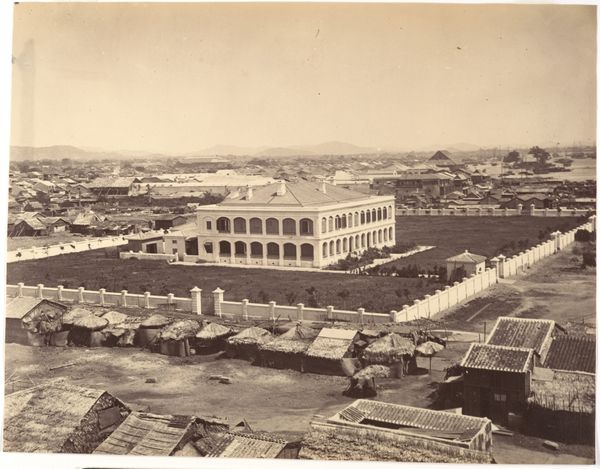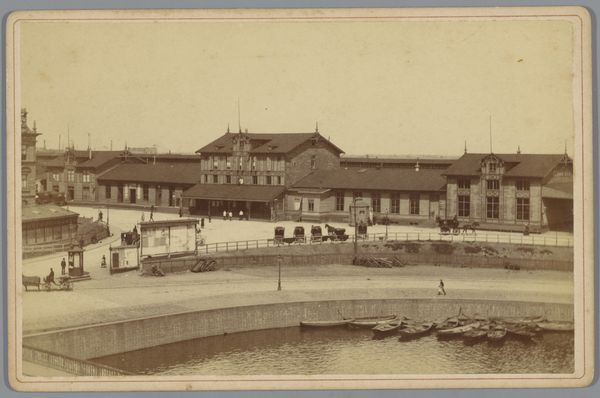
Gezicht op Entrepotgebouw 'De Vijf Werelddelen' en de Entrepothaven c. 1878 - 1900
0:00
0:00
photography, gelatin-silver-print
#
dutch-golden-age
#
photography
#
gelatin-silver-print
#
cityscape
#
realism
Dimensions: height 150 mm, width 218 mm
Copyright: Rijks Museum: Open Domain
Curator: Here we have a gelatin-silver print by F. von Pöppinghausen, titled "View of the Entrepot building 'The Five Continents' and the Entrepot harbor," likely taken between 1878 and 1900. Editor: My first impression is of a carefully balanced composition. The three panels create a panoramic feel, the muted tones lending a certain gravitas. The industrial architecture is juxtaposed against what feels like the more traditional cityscape. Curator: The 'Entrepotgebouw,' as it's known, was a crucial part of Amsterdam's global trade infrastructure. "The Five Continents" isn't just a name; it represents the city’s ambition to connect and profit from the entire world, inextricably linking it to colonial networks of resource extraction. Editor: Note how the architecture itself emphasizes a kind of brutal functionality, with those repetitive rows of windows. And the tonal range—limited to greys and sepias— reinforces that sense of purpose, devoid of frivolous aesthetics. It presents a clear visual language, almost like a blueprint brought to life. Curator: It also serves as a document of labor, even without depicting workers explicitly. Consider the ships in the harbor, symbols of international commerce and exploitation, bearing goods produced across colonized lands and transported to Europe to further concentrate capital. The very construction of this massive warehouse tells a story of displaced communities and disrupted trade routes. Editor: The geometric precision in the building's design, especially the repeating rectangles of the windows, establishes an order, almost a rhythm across the photographic plane. The slight blurring of detail due to the photographic process enhances that rhythm. Curator: And the very idea of warehousing on this scale highlights the era's obsession with categorization, control, and accumulation, deeply embedded within capitalist and colonial power structures. It speaks to systems of governance as much as systems of trade. Editor: On closer viewing, the photograph's division in panels allows a progressive study in geometric composition from buildings on the left to a spacious landscape at center, to the strong vertical emphasis of masts at the right; the rhythm that links them across the panels lies in repeating horizontals. Curator: Indeed. Understanding such architectures allows us to critically reassess the legacies and power imbalances still prevalent today. It invites us to dismantle those inequalities and promote fairer, decolonial narratives. Editor: A thought-provoking example of how photographic representation can reveal formal structures intertwined with broader contexts.
Comments
No comments
Be the first to comment and join the conversation on the ultimate creative platform.
